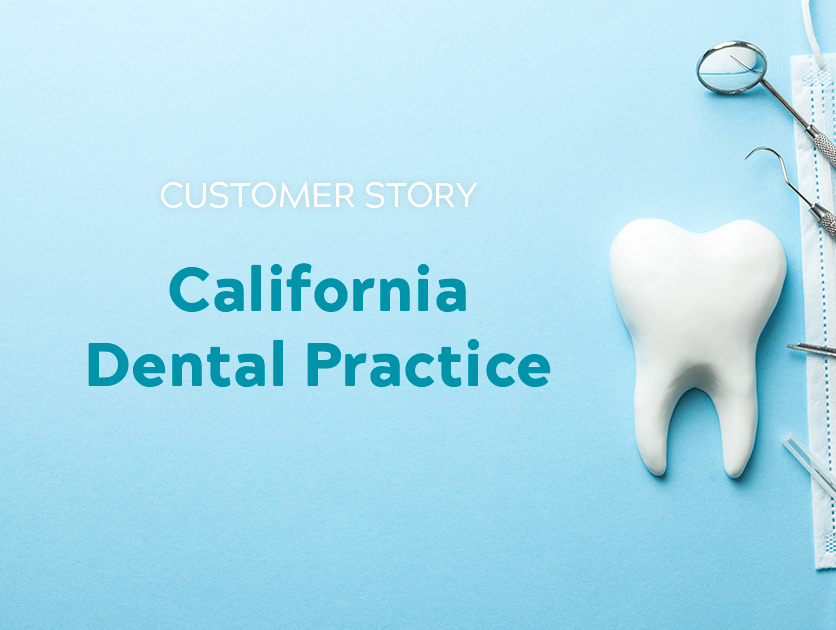Overview
As the global coronavirus pandemic besieged the country and forced widespread business closures, the healthcare industry — which had seen steady growth for more than a decade — lost more than a million jobs as outpatient visits declined by 60%. According to the American Dental Association, the dental industry felt the most significant business impact due to COVID-19. Consumer dental spending declined by 66%, triggering a 53% job loss in dentists’ offices, according to the Altarum Institute.
The Challenge
A family dental practice in California faced many challenges as they tried to bring patients back into the office when the state reopened. Dental care involves high-contact patient encounters, so instituting protocols that protect patients and staff alike was paramount. However, these modifications presented hurdles even beyond clinical care: fewer staff members suddenly had the added responsibility of rapidly implementing operational changes to address COVID-19 safety concerns. The dentist office knew they had to come up with ways to safely communicate with their patients and manage the intake process. These adjustments included:
- Limiting the number of patients in the waiting room
- Conducting COVID-19 symptom screening and temperature checks
- Spacing out appointments to control patient flow throughout the workday
- Communicating the office’s new safety standards and check-in processes to patients
Initially, they asked their patients to call the reception desk when they arrived for their appointment so that staff could go through COVID-19 screening questions over the phone. Patients had to queue outside the office when the waiting room was at capacity. These burdensome processes were further complicated by the many patients unaware of what they were supposed to do once they arrived for their appointments. Issues arising from these new procedures quickly strained the dental practice’s team and created problems for patients. When patients arrived for their appointments and called reception for screening and intake, they often found themselves waiting on hold for up to 15 minutes only to then be bogged down by the manual COVID-19 symptom screening interview that added another ten minutes to each and every check-in. As a result, appointments did not start on time resulting in a 50% decrease in the number of patients that could be seen each day. Controlling patient flow became an additional problem. Patients had to wait outside — sometimes for a half hour! — a situation far removed from a positive patient experience. Staff time was so limited that balancing check-ins with other routine practice management tasks was clearly unworkable.
The Solution
To streamline the check-in and COVID-19 screening process, the dentist office turned to Raxia and their Contactless Check-In platform. Raxia’s Contactless Check-In process automates appointment reminders, digitally delivers the instructions for check-in, and conducts COVID-19 screening via a mobile interface on each patient’s own phone. The Raxia platform gave the dental practice complete control over patient flow and reduced the intake process from 10 minutes down to 60 seconds. All via mobile phone. Always an empty waiting room. To get them back to running an efficient practice that kept patients and staff safe, Raxia identified and strove for four critical, measurable outcomes:
- Decrease the time spent on check-in and COVID-19 screening by at least 2 staff hours per day
- Keep patients and staff safe with “no waiting room workflows”
- Improve the patient experience with the goal of exceeding a Net Promoter score of 50
- Increase the number of daily appointments by 50%
It took only two weeks for Raxia to deploy its platform for the dentist office. Three weeks after deployment, Raxia had achieved the following results:



